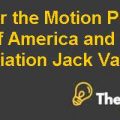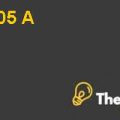Section A: Essentials
Question 1
The normality assumption states that the underlying random variable which is our variable of interest is distributed normally. The mean of the distribution should be 0 and the standard deviation should be 1 with a symmetrical bell shaped curve. If the assumption of normality is violated then this might change the conclusion of the research and distort the final results therefore, a number of tests and data analysis techniques require that the data should be normal. For instance, in multiple regression analysis it is the assumption of the model that all the residuals of the model should be normally distributed (Armstrong, 2012).
A number of tests are used to determine whether the data for a random variable is distributed normally or not. It is the requirement of all the parametric tests that the data should be distributed normally while non-parametric tests state that data should follow a specific distribution. Two specific tests for testing normality are Shapiro Wilk’s W test and for large sample size, it is Kolmogorov-Smirnov test. We have applied this test to check the normality of the MANTIME variable. The relevant result tables of this test are shown in exhibit 1 in the appendices.
Since, the sig value for Shapiro Wilk’s W test and for large sample size, it is Kolmogorov-Smirnov tests both is 0.000, lower than 0.05 therefore, the data is significantly deviated from the mean and it is not normally distributed(Govidarajulu, 1997). The histogram for this variable is also shown below. It has a mean of greater than zero and standard deviation of 10.109 therefore, the data is not normally distributed.
SPSS Business Forecasting and Data Analysis Assignment Harvard Case Solution & Analysis
Figure 1: Normality Testing for MANTIME
Question 2
First of all, we have created the new variable and names it as Management_Score_Overall by using the compute variable command in SPSS. We have computed the variable by averaging all the 18 aspects of management practices for monitoring, targets setting and incentives. We have generated the histogram to determine that whether the new computed variable is normally distributed or not and show its distribution. This chart is shown below:
Figure 2: Distribution of Management_Score_Overall
Question 3
The distribution of the overall management score based on whether the firm is multinational or not, its ownership type and size of firm is shown and explained below:
Figure 3: Distribution by Type of Firm
The above distribution shows that the overall management score is highly variable with respect to the domestic multinational and least variable with respect to the foreign multinational (Trochim, 2011).
Figure 4: Distribution by Type of Ownership
The above distribution shows that the overall management score is highly variable with respect to the ownership by family and family CEO and least variable with respect to the ownership by 5+ shareholders.
In order to test the variability of overall management score on the basis of the size of the firm, we have first used the Compute command in SPSS to compute the firm size variable by multiplying the number of employees and average hours worked variables.........................
This is just a sample partical work. Please place the order on the website to get your own originally done case solution.













